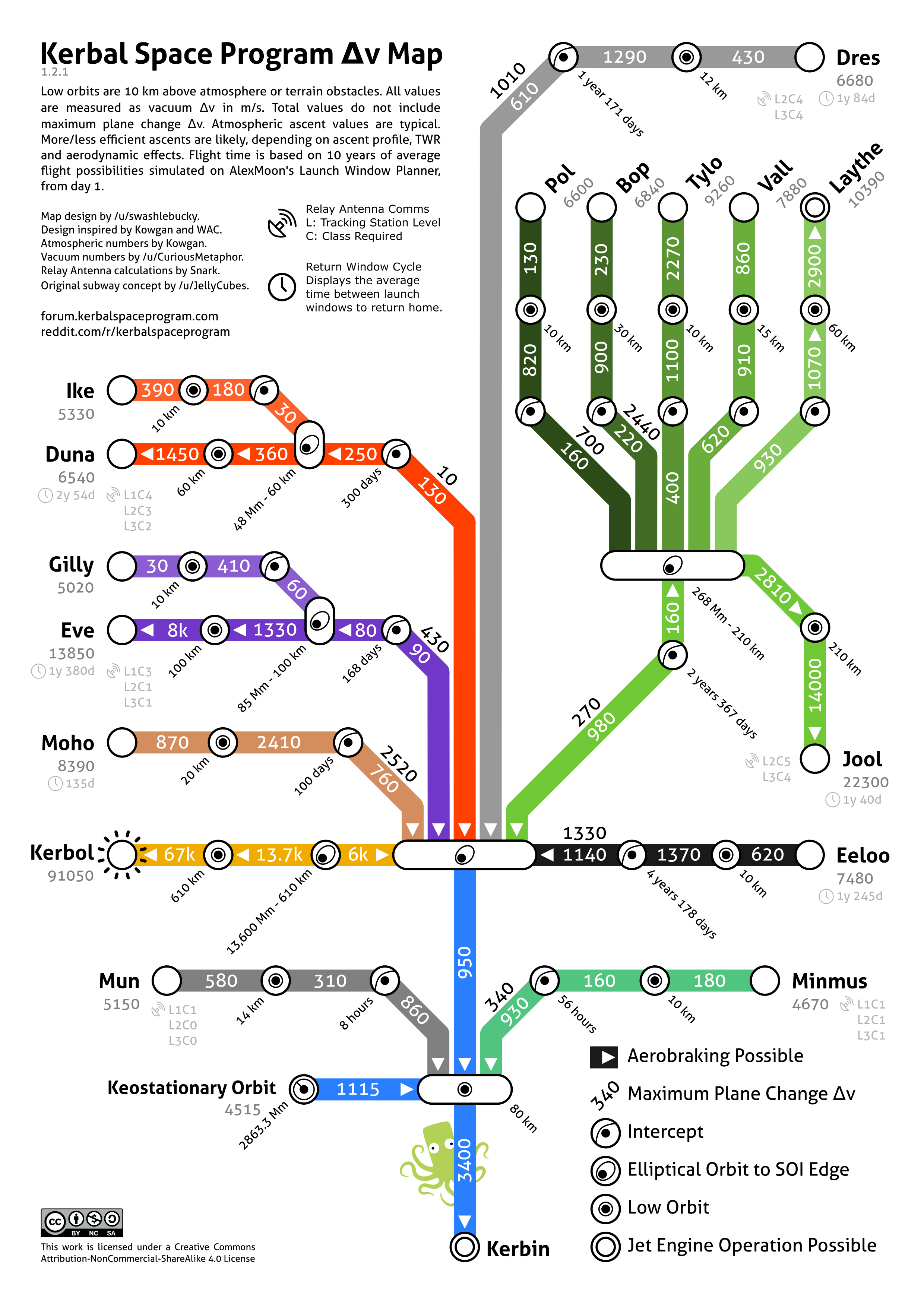Difference between revisions of "Cheat sheet"
(reformat) |
|||
| Line 2: | Line 2: | ||
= Mathematics = | = Mathematics = | ||
| − | == Thrust to | + | == Thrust to Weight Ratio (TWR) == |
{{See also|Terminology#TWR|Terminology}} | {{See also|Terminology#TWR|Terminology}} | ||
This is Newton's Second Law. If the ratio is less than 1 the craft will not lift off the ground. | This is Newton's Second Law. If the ratio is less than 1 the craft will not lift off the ground. | ||
| Line 8: | Line 8: | ||
<math>\text{TWR} = \frac{F}{m \cdot g}</math> | <math>\text{TWR} = \frac{F}{m \cdot g}</math> | ||
| − | == Combined | + | == Combined Specific Impulse (I<sub>sp</sub>) == |
If the I<sub>sp</sub> is the same for all engines in a stage, then the I<sub>sp</sub> is equal to a single engine. If the I<sub>sp</sub> is different for engines in a single stage, then use the following equation: | If the I<sub>sp</sub> is the same for all engines in a stage, then the I<sub>sp</sub> is equal to a single engine. If the I<sub>sp</sub> is different for engines in a single stage, then use the following equation: | ||
| Line 14: | Line 14: | ||
== Delta-v (Δv) == | == Delta-v (Δv) == | ||
| − | ===Δv Basic | + | ===Δv Basic Calculation === |
{{See also|Tutorial:Advanced Rocket Design}} | {{See also|Tutorial:Advanced Rocket Design}} | ||
Basic calculation of a rocket's Δv. Use the atmospheric and vacuum thrust values for atmospheric and vacuum Δv, respectively. | Basic calculation of a rocket's Δv. Use the atmospheric and vacuum thrust values for atmospheric and vacuum Δv, respectively. | ||
Revision as of 17:54, 3 July 2013
Kerbal Space Program rocket scientist's cheat sheet: Delta-v maps, equations and more for your reference so you can get from here to there and back again.
Contents
Mathematics
Thrust to Weight Ratio (TWR)
- → See also: Terminology
This is Newton's Second Law. If the ratio is less than 1 the craft will not lift off the ground.
Combined Specific Impulse (Isp)
If the Isp is the same for all engines in a stage, then the Isp is equal to a single engine. If the Isp is different for engines in a single stage, then use the following equation:
Delta-v (Δv)
Δv Basic Calculation
- → See also: Tutorial:Advanced Rocket Design
Basic calculation of a rocket's Δv. Use the atmospheric and vacuum thrust values for atmospheric and vacuum Δv, respectively.
Transitional (true) Δv of a Stage that Crosses from Atmosphere to Vacuum
| Body | Δvout |
|---|---|
| Kerbin | 1000 m/s2 |
| other bodies' | data missing |
Calculation of a rocket stage's Δv, taking into account transitioning from atmosphere to vacuum. Δvout is the amount of Δv required to leave a body's atmosphere, not reach orbit. This equation is useful to figure out the actual Δv of a stage that transitions from atmosphere to vacuum.
Maps
 Various fan-made maps showing the Δv required to travel to a certain body.
Various fan-made maps showing the Δv required to travel to a certain body.
Total Δv values
Δv change values
Δv nomogram
Math Examples
TWR
draft
(Isp)
draft
(Δv)
draft
See also
Links to collections of reference material.



